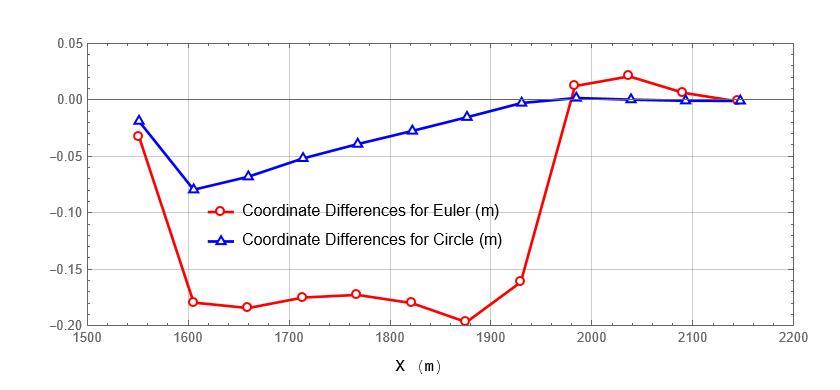PLDYN programs can be used to position the barge during laying to a curved pipeline route so that touch down point always remain on the intended pipeline route. PLDYN can be used for laying pipe to two different kinds of curved routes: circular or a proprietary (called Euler) profile.
Continuation of a straight line route to a curved route has to be done with care. Since a naturally straight pipe curvature cannot change from zero to a finite curvature value (without external force or a bending machine), attempting to start a circular route usually ends up with a unexpected pipeline configuration in the transition zone. Typically the lateral soil forces are not enough to maintain a circular pipeline profile. In addition to pipe being laid off the intended pipeline route, additional extra stresses are introduced to the pipeline. PLDYN provides an alternative route profile which gradually or continuously transition pipe curvature from zero to a finite value at the peak of the curved route.
Using commercial general purpose programs assume that the original mesh geometry is the natural geometry of the pipeline. Often engineers handle modelling of offset or a curved route by generating a mesh to fit the offset or curved route. This often leads to an incorrect model as general purpose finite element software assumes the given mesh describes the natural geometry of the pipeline whereas in most cases the natural shape of pipeline is straight line. PLDYN determines the actual stable pipeline geometry based on internal forces in equilibrium with available soil forces. In calculating the internal forces and the pipe deformations, natural shape of the pipeline is taken as straight line.
The following figure presents the Z coordinate deviation from the required route profile during laying into a curved route for both circular and Euler route profiles. These two graphs are another evidence that as-laid pipe geometry will include lateral deformations not considered in the design. Variations in the tension at the tensioner which inevitably happens unless the sea stat is perfectly calm will result in lateral pipe displacements varying along its length.

These variations may have to be considered if the pipeline is to operate under high pressure and high temperature.


